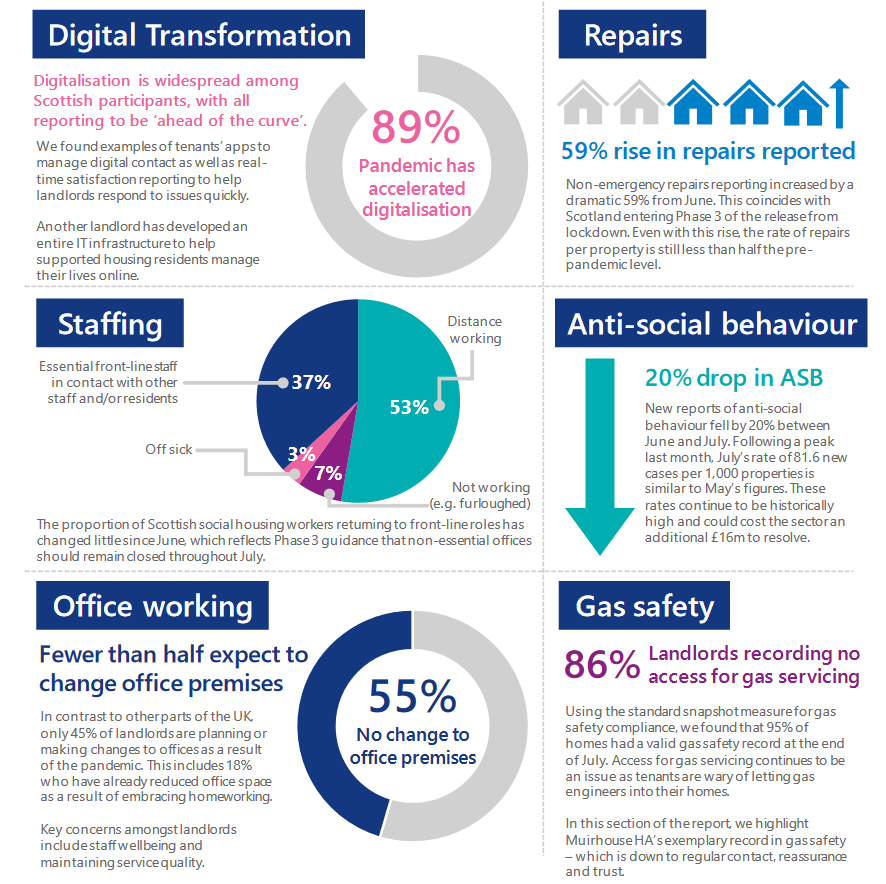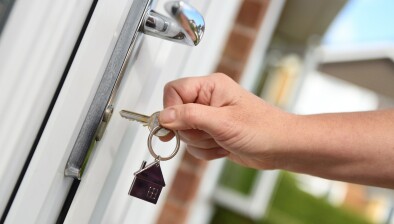Non-emergency repairs increase by 59% as performance of Scottish landlords continues to improve
Reports of non-emergency repairs by Scottish landlords increased by 59% in July but performance will not return to ‘normal’ levels for some time, according to new HouseMark Scotland COVID-19 impact data.

The membership-exclusive report is the fifth in the only UK wide series of monthly reports with data up to the end of July 2020.
The increase in non-emergency repairs reporting coincides with Scotland entering Phase 3 of the release from lockdown. Even with this rise, the rate of repairs per property is still less than half the pre-pandemic level.
New reports of anti-social behaviour fell by 20% between June and July. Following a peak last month, July’s rate of 81.6 new cases per 1,000 properties is similar to May’s figures. These rates continue to be historically high and could cost the sector an additional £16m to resolve.
UK-wide the pandemic has prompted digitalisation, with more than 90% of landlords actively working on digitally transforming services and 38% of participants accelerating the development of tenant portals.
The proportion of staff not working (e.g. due to furlough) continues to shrink – down to 3% of workforce. HouseMark found that 96% of landlords are set to embrace homeworking in some form in the longer term.
For the first time since lockdown measures were introduced, HouseMark has seen a reduction in the month on month arrears rate. Overall sector arrears have reduced by 0.05 percentage points since June and now stand at 3.64%. Anecdotal evidence shows pockets of arrears increases, for example where a large local firm closes down.
A total of 81% of landlords recorded no access visits for gas safety during July. HouseMark estimates that UK social landlords failed to gain access to over 50,000 properties in July to carry out essential gas safety work. Gas safety compliance is currently around 98%.
Lettings have stabilised after a large rise in June – just below 30,000 in July – around 90% of pre-pandemic levels. Vacancies have reduced to 0.96%, this is still well above the 0.5-0.6% seen during this period in 2018-19. HouseMark estimates that the sector will forfeit as much as £32m in lost rent up to the end of December, as a result of increased vacancy rates caused by the pandemic.
HouseMark chief executive Laurice Ponting said: “Now in month five, the insights from our COVID-19 analysis have been used by our members and the wider sector to understand the impact on key services, contextualise performance and make evidence-based decisions to navigate the pandemic. As the crisis develops into a pattern of universal anti-viral measures across the UK, punctuated with local outbreaks, we are starting to see the sector modify its plans for the future as remote contact, social distancing and home working look set to stay for many months to come.
“Demand for services has returned, but there is still much work to do clearing backlogs before the sector can feel a fuller sense of recovery and landlords will need to prioritise how they will use resources to meet this demand in the coming months. With residents and colleagues now acutely aware of the benefits of digitalised services, it is clear there is an opportunity to build on the learning curve the sector has been through since March and digitalise services for the benefit of tenants.”
The full report, including detailed analysis and best practice from landlords across the UK, is exclusively available to participating organisations. The executive summary is available to view at HouseMark’s website.








